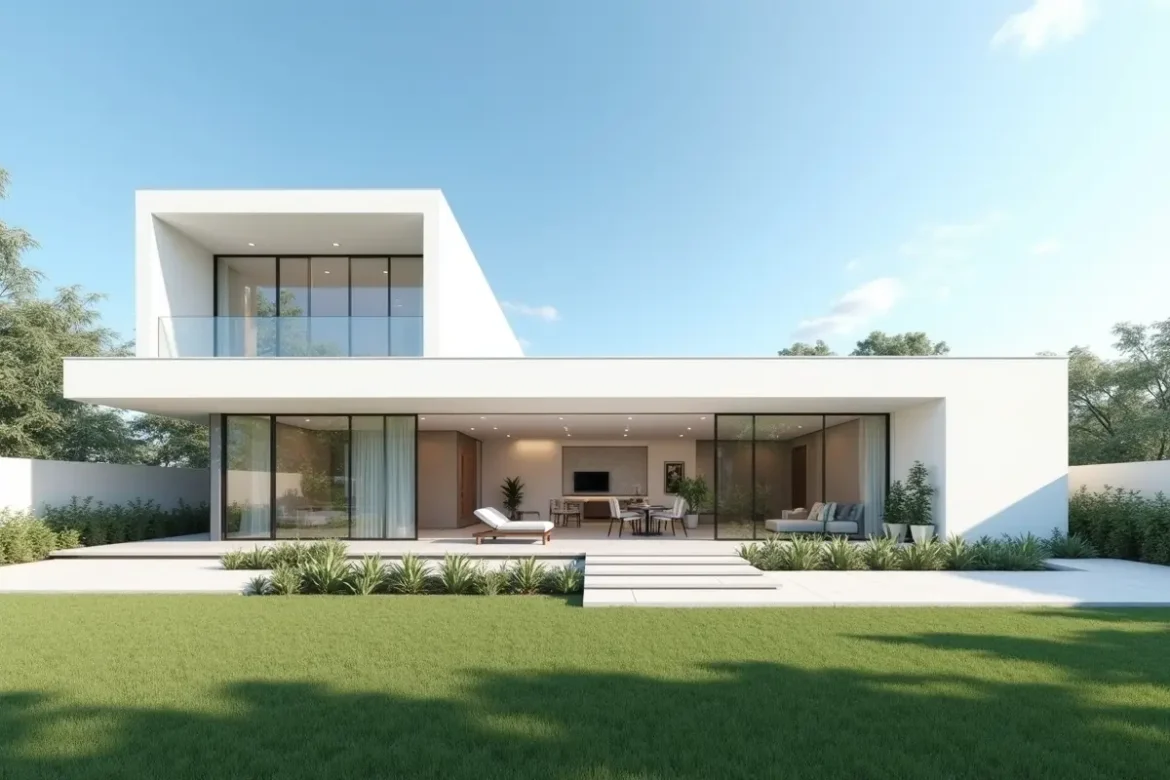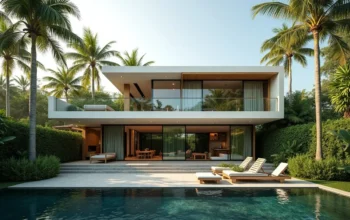
When people describe a home as “modern,” they often picture sleek lines, open spaces, and large windows. But modern design is more than just a trend, it’s an architectural philosophy centered on simplicity, function, and connection to the environment.
Understanding what defines a modern home helps homeowners recognize how design influences comfort and lifestyle. This guide explores the principles behind modern residential architecture, how it compares to other house styles, and what makes it so appealing for today’s living.
Contents
Defining Modern Architecture in Homes
Modern architecture emerged from the early 20th century movement that emphasized clean design, minimal ornamentation, and honest use of materials. In modern homes, structure and form are celebrated rather than hidden. Open layouts, geometric shapes, and a focus on light create a sense of harmony and purpose.
Every element, from the flow of rooms to the choice of materials, is designed for function first, beauty second. When examining residential architecture styles, it’s clear that modern design values openness, sustainability, and efficiency above all. Largass panels, flat roofs, and integrated outdoor spaces reflect this come glmitment to blending the home with its surroundings. For homeowners, this means a space that feels calm, cohesive, and connected to nature.
Key Features That Define a Modern Home
Modern homes share several key characteristics that make them instantly recognizable. These include flat or low-pitched roofs, smooth façades, and an emphasis on horizontal lines. Inside, open floor plans replace compartmentalized rooms, allowing spaces to flow naturally. Neutral colors, such as white, beige, gray, and soft earth tones, form a backdrop for textures like wood, stone, and steel.
Natural light is a hallmark of modern design, with floor-to-ceiling windows framing the landscape as part of the interior experience. Outdoor areas are also treated as extensions of the home, a concept often seen in residential landscape architecture, where patios and gardens blur the line between inside and out. These home styles balance practicality with refined aesthetics, creating living environments that feel both elegant and effortless.
Function, Flow, and Natural Light
The success of modern design lies in how well it uses space. Architects focus on optimizing movement, ensuring that each area serves multiple purposes. For example, a kitchen may open directly into a dining or living space, fostering social connection.
Natural light is treated as a design feature, with strategically placed windows, skylights, and glass doors illuminating the home throughout the day. This open and airy feeling defines the best modern residential architecture, offering comfort without clutter.
Modern vs. Contemporary vs. Mid-Century Design
Although the terms are often used interchangeably, modern, contemporary, and mid-century styles each have distinct meanings. Modern architecture refers to the design principles developed between the 1920s and 1970s, emphasizing simplicity and function.
Contemporary architecture, on the other hand, reflects current ideas and technologies, it’s always evolving. Mid-century modern sits between the two, known for organic shapes, bold colors, and innovative use of materials. The variety within types of architecture allows homeowners to choose a design language that fits their taste and lifestyle.
For instance, American contemporary residential architecture might combine modern minimalism with regional materials or sustainable systems. The key is finding balance, creating homes that feel timeless yet adaptable to changing needs.
Choosing the Right Style for Your Home
When planning a remodel or new build, selecting the right architectural style is about more than looks, it’s about lifestyle and environment. Homeowners should consider factors like climate, neighborhood context, and personal routine before committing to a design direction. A good architecture firm can help translate a homeowner’s preferences into a cohesive vision, aligning aesthetics with practicality.
Modern homes in colder climates, for example, might prioritize insulation and sunlight capture, while those in coastal regions focus on airflow and shade. Understanding house styles gives homeowners the confidence to make informed design choices and invest in features that truly enhance daily living.
Personalizing Modern Design
Even within modern design, there’s room for individuality. Custom finishes, accent materials, and lighting can make a space feel personal without compromising its clean aesthetic. Homeowners might choose natural woods for warmth or metal accents for contrast.
Integrating greenery through residential landscape architecture softens sharp lines and adds texture. Ultimately, the best trends in residential architecture aren’t about following fashion, they’re about timeless design that supports comfort, sustainability, and self-expression.
Final Thoughts: Modern Homes for Modern Living
Modern homes continue to inspire because they embody clarity, simplicity, and purpose. They reflect a mindset that values quality over quantity and connection over excess.
Whether you prefer minimalist forms or contemporary luxury, understanding architectural styles helps you create spaces that feel both personal and enduring. Working with experienced architects ensures that every detail, from structure to landscape, aligns with your vision and enhances how you live each day.



